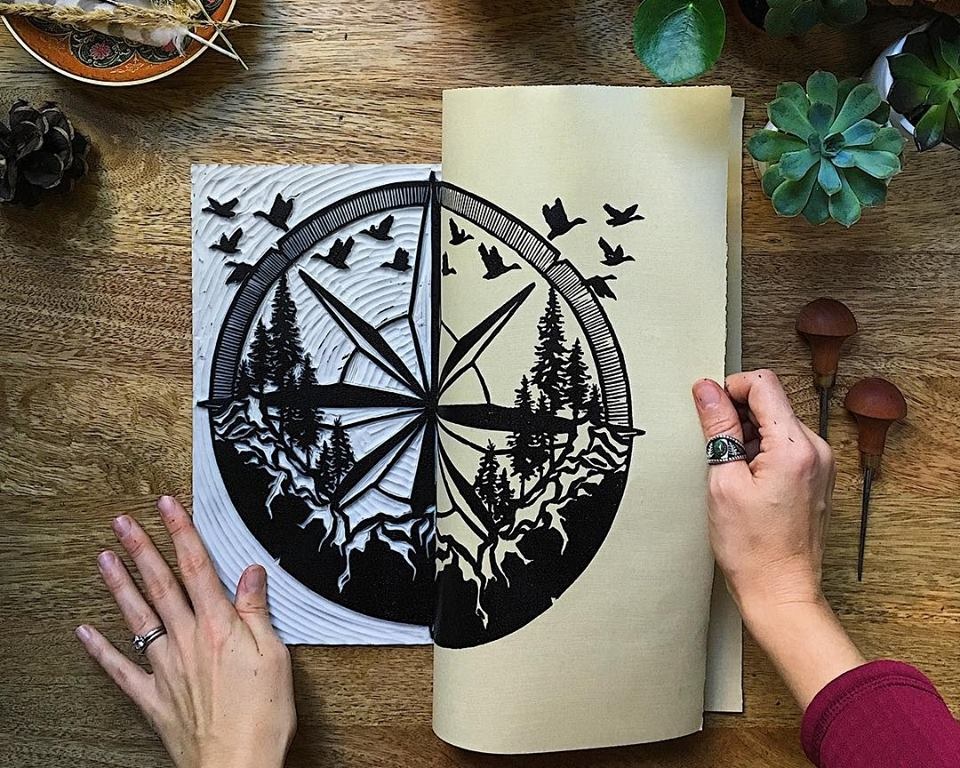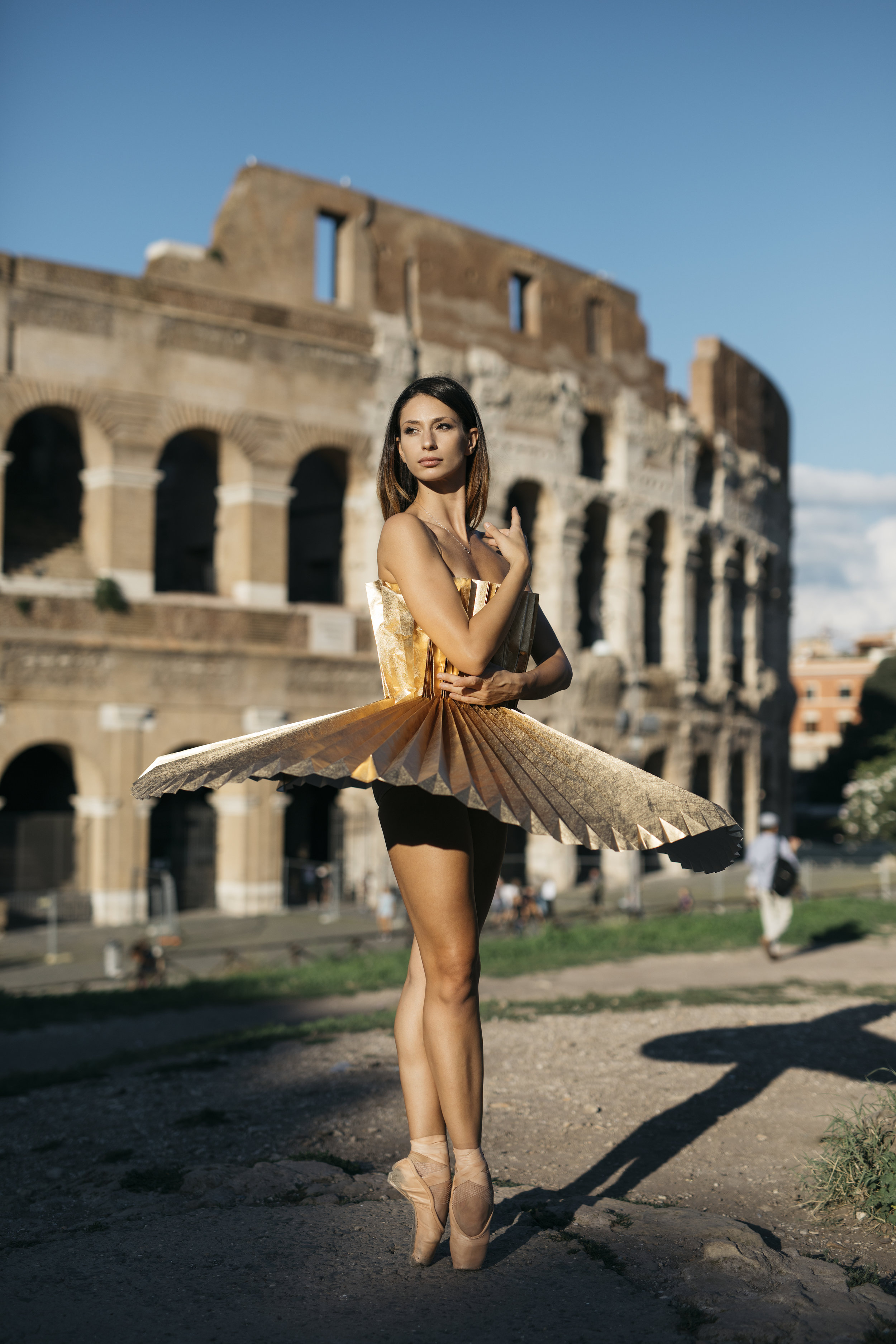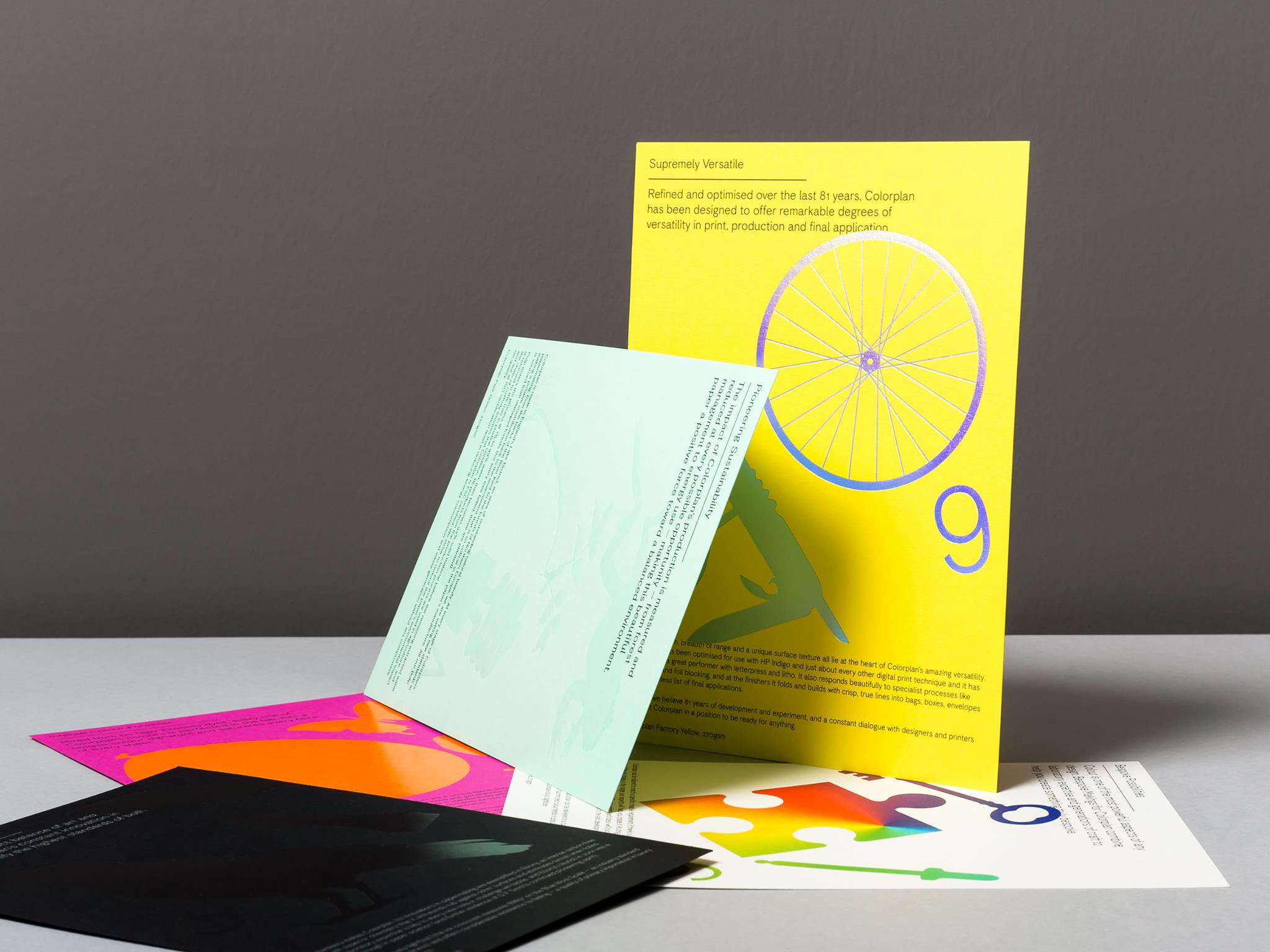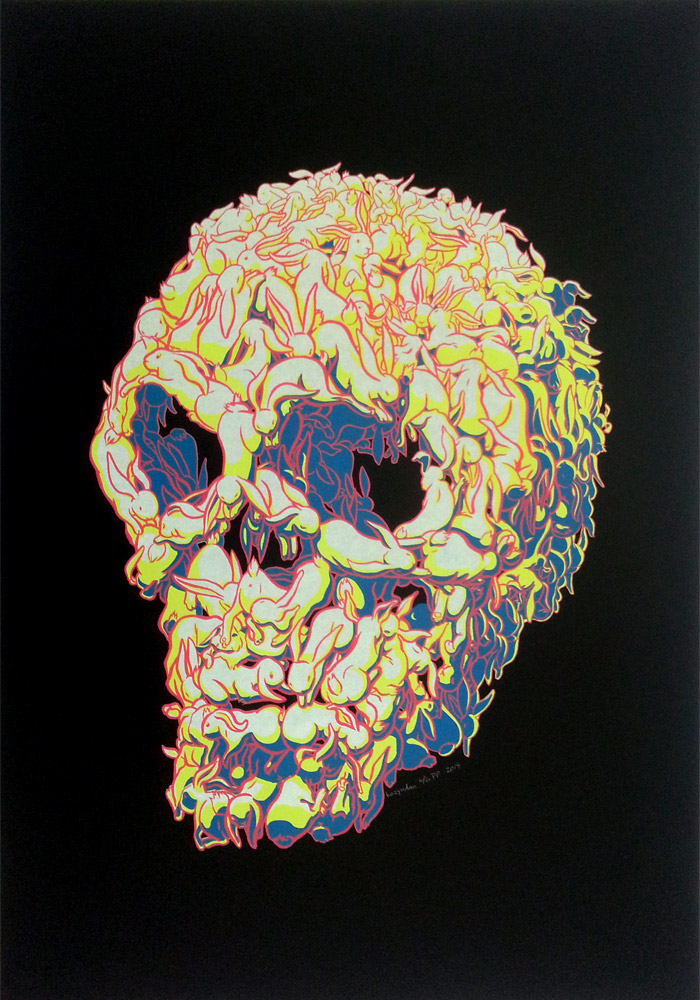From the Artists.
Aftyn Shah, founder of Rise + Wander, is a self-taught printmaker and painter with a mission to move others and inspire adventure. She discovered the importance and power of art during the healing process after a life-changing accident. Aftyn’s work involves nature and landscapes real and imagined, as the outdoors provide inspiration and soothing restoration.
Choosing a paper is large and important part of Aftyn’s art. Through experimenting with several papers, she discovered the papers best for her nature inspiring art.
The process requires a strong paper to withstand the rubbing/burnishing of the surface against the block, but also soft enough to absorb the ink within the grooves. However, as we often recommend, only by experimenting with different substrates will you find the best choice for your project.
Aftyn Shah, Rise + Wander
“I think paper can be one of the biggest variations between artists.”
Paper is such a fun topic! The options are diverse and can add something special to a piece or go completely unnoticed while elevating it through simple quality. Whenever someone asks me for a paper recommendation, I always offer the caveat that testing for yourself is the best way to find your favorite, but I definitely have my preferences.
When I first started printmaking, to be perfectly honest, I used cheap cardstock. I had plenty of it from previous projects, in a whole range of colors, and it was durable. As I continued, though, I started to branch out and explore other options—many different options! I tried the dreamily airy papers like Unryu, pulpy ones like Chiri, decorative colorful papers a friend brought from traveling abroad, and a whole host of mould-made cotton papers (Rives BFK, Somerset, Stonehenge, Arches, and so on).
In the end, I fell in love with the Stonehenge line as my go-to option. It’s velvety, with a hint of soft texture, and takes prints smoothly. I still burnish each piece by hand, which means I love a paper that takes ink easily and I like seeing the slight indentation in the paper as I press onto the block. It’s light, but durable, and works equally well for a single-color print and multiple layers without warping or getting weighed down.
Similarly, when I work in mixed media, especially with watercolors or acrylics, the paper is still able to support the different paint and pen combinations. Having a large amount of versatile paper on hand is convenient.
Block Print on Stonehenge White
Mixed Media with acrylic, pencil drawing and ink illustration on Stonehenge Paper.
When picking a paper, I consider aspects like how well it will print and of course cost, but I really like a bit of character. I decide if I want the paper to let the art stand on its own or add an additional element, either aesthetically or texturally. The latter is what draws me to bookmaking papers, like Nideggen and India Hemp. I love seeing hints of the fibers that make me think about the papermaking process, an artform in itself! Exploring other options, even if they’re not specifically made for my technique, is exciting. It also opens up options for my customers to become creative in how they display the artwork.
Lately, I mostly work with black ink, which means I can go with a simple contrast in white or add some additional visual interest with a colored paper. For the most part, I like to stay neutral (Nideggen or Stonehenge’s Fawn or Natural), as it goes well with my outdoorsy work. Occasionally, though, I use the paper to insinuate the mood of a piece. For instance, I created The Northern Coastline with a moody rocky coast in mind, and a light grey color really seemed to suit that atmosphere. I wouldn’t choose it for every piece, but for this one it worked perfectly.
In the end, I think I’ll always recommend someone try several options before landing on a favorite. Everything from personal technique to weather conditions can affect how materials can work with paper!


































